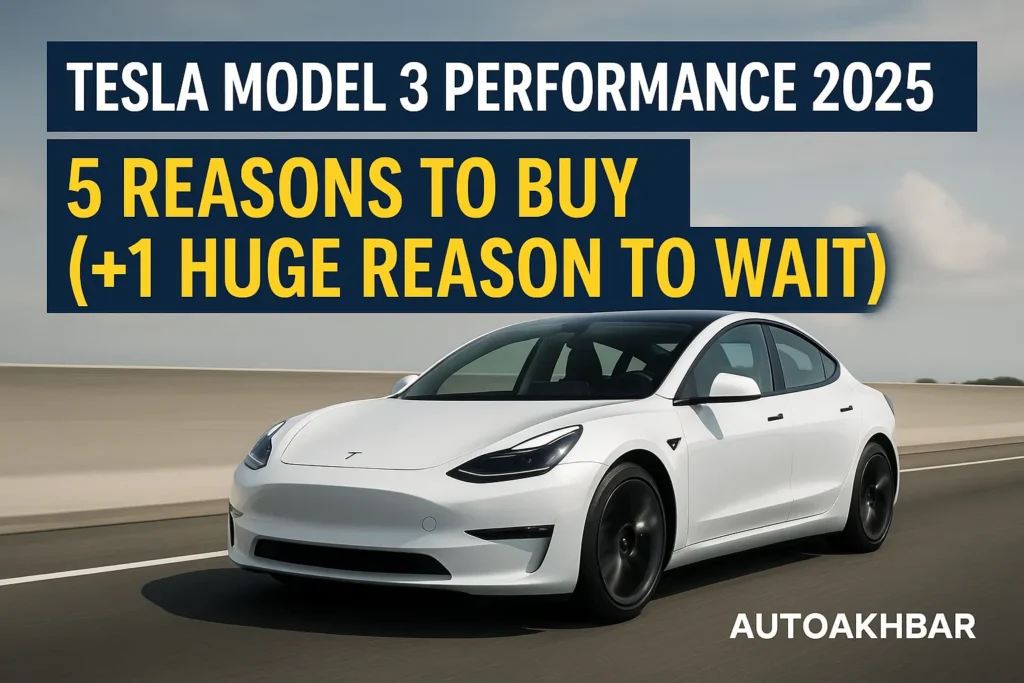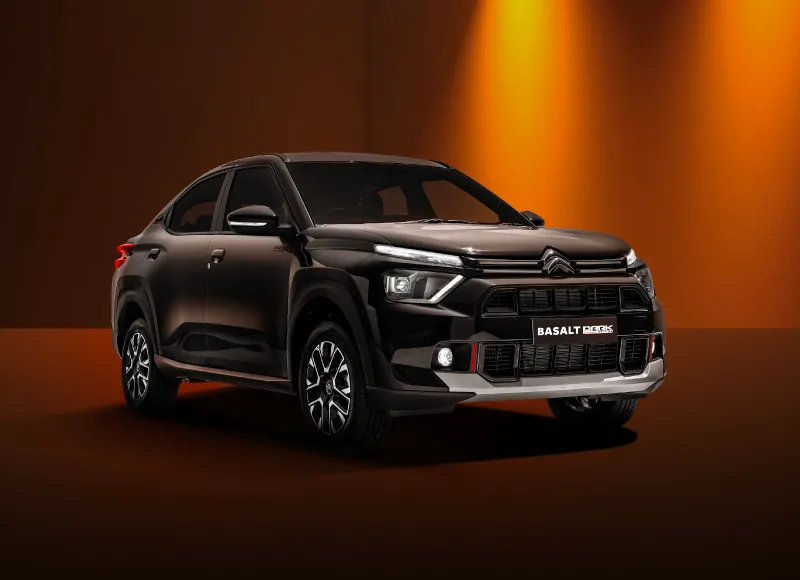Should You Buy the Tesla Model 3 Performance in 2025? 5 Key Reasons (+1 HUGE Reason to Wait)
The Tesla Model 3 has redefined what we expect from electric sedans, and with the 2025 version, Tesla aims to take things to the next level. Specifically, the Model 3 Performance is a standout in the EV market, offering incredible speed, technology, and practicality, all for a price that’s quite competitive compared to many high-performance vehicles. But should you buy one in 2025? Let’s dive into the five compelling reasons why the Tesla Model 3 Performance should be at the top of your list, along with one big reason to consider waiting.

Table of Contents
Unmatched Price-to-Performance Ratio

When it comes to performance cars, we often expect to pay a premium. However, the Tesla Model 3 Performance defies that expectation. For less than $50,000 after tax credits, you’re getting a car that can accelerate from 0 to 60 mph in just around 3 seconds (Tesla states 2.9 seconds). In real-world testing, it’s closer to 3.1 seconds with rollout included. For comparison, vehicles that offer similar acceleration in the $100,000+ range show that the Model 3 Performance offers exceptional performance for its price.
In terms of top-end speed, the car does 60-130 mph in under 10 seconds (with optimal battery temperatures), putting it in the elite performance bracket for a fraction of the price. If you’re looking for a fast, everyday car without breaking the bank, the Tesla Model 3 Performance is unmatched.
How To Choose Best Tyre for Cars 2025
Outstanding Storage Space for a Performance Car
Typically, high-performance vehicles come with limited trunk space, but the Tesla Model 3 Performance is an exception. With a front trunk (frunk) offering 3.1 cubic feet and a rear trunk with 21 cubic feet of space, the Model 3 offers plenty of room for your gear. And that’s not all – the rear seats fold flat, allowing you to extend your cargo space even further by up to 20 cubic feet.
For those of you who need space for everyday essentials or the occasional IKEA trip (yes, the Model 3 Performance can handle that), the car proves that a fast car doesn’t have to compromise on practicality.

Incredibly Low Operating Costs
Fuel costs and maintenance can be major expenses for performance car owners. However, Tesla flips the script on this one. As an electric vehicle, the Model 3 has no need for premium fuel or expensive maintenance like oil changes, brake pads, or rotor replacements. Even if you rely solely on the Tesla Supercharger network, your fuel costs are lower than even typical gas-powered cars.
At home, charging the Tesla Model 3 costs a fraction of what you’d spend on gas. On average, you’ll pay $20-$30 per month to charge, even if you’re driving around 1,000 miles. That’s a significant reduction in running costs compared to conventional performance vehicles, which often come with high maintenance fees.
Tesla’s Supercharger Network – A Game-Changer for Long Trips
When you buy a Tesla, you don’t just get a car – you get access to the most extensive and reliable charging network available. The Tesla Supercharger network is seamlessly integrated into the car’s navigation system, which means you can easily find and use Superchargers across the country.
While home charging can cover most of your needs, the ability to quickly supercharge on long trips gives you an edge that other EVs simply can’t offer. And Tesla has made it easier by offering a built-in payment system, so you don’t have to worry about finding the right adapter or subscription.
The only downside? Supercharger speeds are still not on par with some of the other EVs coming out of China, but for most drivers, the charging times are still manageable, especially for road trips.

Full Self-Driving (FSD) – The Future of Driving
Tesla’s Full Self-Driving (FSD) is perhaps one of the most unique selling points of owning a Tesla in 2025. The latest updates to Tesla’s Autopilot system (including version 13) have made significant strides, and FSD is finally living up to its promise. While not perfect, the system allows for hands-free highway driving, navigating complex intersections, and even some urban driving assistance.
As of now, FSD is an optional upgrade, but it’s a feature that distinguishes Tesla from its competitors. Whether it’s for long road trips or just a more relaxing drive through city traffic, FSD offers a level of convenience that you simply can’t find in other EVs at this price point.
The Big Reason to Wait: Charging Speeds and Battery Tech
While the Tesla Model 3 Performance is undeniably impressive, there is one major reason to consider waiting before pulling the trigger on your purchase: Charging speeds. Tesla’s Supercharger network is great, but the current charging speeds could be better. Tesla has recently received feedback from owners requesting improved charging curves, and there’s speculation that future Tesla models will feature even faster charging capabilities.
If charging time is a major factor for you – especially if you plan to rely on public charging stations for your daily driving – waiting for the next iteration of Tesla’s charging technology might be a smart move.
Final Thoughts
The Tesla Model 3 Performance offers an exceptional price-to-performance ratio, outstanding storage space, low operating costs, and access to Tesla’s Supercharger network. If you’re in the market for a performance vehicle that’s also practical and eco-friendly, the Model 3 Performance is one of the best options available in 2025.
That said, if you’re not in a rush and charging speed is a crucial factor for you, waiting for the next generation of Tesla vehicles might be worth considering. Nonetheless, the Model 3 Performance is a top contender for anyone who wants an electrifying driving experience with minimal compromises.
FAQ
How much does a Model 3 Tesla cost?
As of 2025, the starting price of the Tesla Model 3 in the U.S. market is approximately $38,990 for the Rear-Wheel Drive variant. The Model 3 Long Range AWD starts around $47,490, while the high-performance Model 3 Performance (Highland) variant begins at $54,990.
Pricing may vary based on state incentives, federal tax credits, and configuration upgrades like Full Self-Driving (FSD). In India, Tesla is expected to launch by late 2025, and pricing details are yet to be officially announced.
Which Tesla is better, Model 3 or Model Y?
Both the Model 3 and Model Y share the same platform, electric drivetrain, and interior tech, but they serve slightly different needs:
- Model 3 is ideal for those who want a sportier driving experience with better aerodynamics, faster acceleration, and more range.
- Model Y is better suited for families or those who need extra cargo space, rear headroom, and a higher seating position.
If performance and affordability are your priority, the Model 3 Performance is a clear winner. But if practicality and space matter more, the Model Y Long Range is the better choice.
What is the cheapest Tesla?
The cheapest Tesla available in 2025 is the Tesla Model 3 Rear-Wheel Drive, with a base price of around $38,990 in the U.S.
It offers a great entry point into Tesla ownership, featuring a respectable 272-mile range (EPA-estimated), Autopilot, and access to the Tesla Supercharger network. For budget-conscious buyers who still want Tesla’s core features, this is the most affordable option currently available.


